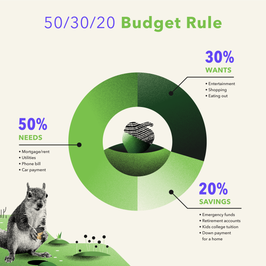Grocery Store Price Comparison

Inflation continues to drive the cost of groceries higher and higher, according to data from the Bureau of Labor Statistics. Grocery prices in March of 2022 were 10% higher than they were during the same month last year.
Reporters were sent out in three separate locations to shop for a basket of 13 kitchen staples in the suburbs of New York, Chicago, and Los Angeles, at four national grocers: Aldi, Target, Trader Joe’s, and Walmart. Here’s what we found.
In big city suburbs, prices are surprisingly consistent
Despite some wide variations for specific products among grocers and zip codes, the final cost of those baskets ended up being within $1 of one another.
The average price of our grocery list was highest in Dekalb, Illinois — a suburb of Chicago — at $46.07. But that was only 25 cents more than the average for our reporter in Hudson County, New Jersey, outside New York City, and only $1.08 more than the basket for our reporter in Corona, California outside Los Angeles.
The average price of a basket of 13 kitchen staples is surprisingly consistent across the suburbs of 3 major U.S. cities
Consistency could be attributed to the fact that retailers, regardless of region, are facing similar hurdles, says Zain Akbari, an equity analyst at Morningstar. “High transportation costs, raw material, and input prices are more national in character,” he says, and drive costs up.
There were, however, wider discrepancies in the price of individual items from retailer to retailer.
Trader Joe’s was the most expensive across the board
Trader Joe’s is known for one-of-a-kind steals such as its “Two Buck Chuck” wine, but it ended up being the priciest retailer of the four we visited.
Regardless of region, grocery costs were usually highest at the popular supermarket chain. While the prices for some items like bananas, milk and cheese were comparable to those at the other retailers we checked, there were certain outliers, like bread and chicken, that made the bill at Trader Joe’s notably more expensive.
Several staples were considerably more expensive at Trader Joe’s than they were at other grocers
Chart: Gabriel Cortés/Grow
Source: Grow
For example, the average price of 3 lbs. of boneless, skinless chicken breasts across the three Trader Joe’s locations we checked came in at almost $19. That was more than double the price at Aldi, Target, and Walmart.
The average cost of a five-pound bag of flour and a loaf of white bread at Trader Joe’s was almost double what it was at the other three retailers.
Walmart and Target had comparable prices, and Aldi was the least expensive retailer.
Some items, like eggs, cost more at Walmart
Certain items were surprisingly expensive at other retailers, though. For example, Walmart had the most expensive eggs in each city — even pricier than Trader Joe’s, which was the most expensive grocer overall.
For a retailer that touts low prices, dramatically increasing the price of a highly “visible” item like eggs might seem like an odd choice, says Francesco D’Acunta, assistant professor of finance at Boston College who co-authored the paper “How Grocery Prices Influence Consumers’ Inflation Expectations.”
But at a time when consumers are braced for soaring prices by feverish media coverage, they might chalk up the higher price point to inflation and be less likely to shop around or fault the retailer. “Prices are increasing all around consumers, so this idea of punishing the retailer for increasing prices is not there,” D’Acunta says.
This material has been presented for informational and educational purposes only. The views expressed in the articles above are generalized and may not be appropriate for all investors. The information contained in this article should not be construed as, and may not be used in connection with, an offer to sell, or a solicitation of an offer to buy or hold, an interest in any security or investment product. There is no guarantee that past performance will recur or result in a positive outcome. Carefully consider your financial situation, including investment objective, time horizon, risk tolerance, and fees prior to making any investment decisions. No level of diversification or asset allocation can ensure profits or guarantee against losses. Article contributors are not affiliated with Acorns Advisers, LLC. and do not provide investment advice to Acorns’ clients. Acorns is not engaged in rendering tax, legal or accounting advice. Please consult a qualified professional for this type of service.









